Americans once had a higher trust in major institutions but in the past few years, there has been a significant decline in this trust. Confidence in schools, the press, the military, the Supreme Court, big business, Congress, and many others has declined in almost every instance in recent years – and that includes the medical industry. According to a recent Gallup Poll, about less than half of Americans had a positive view of the medical system, 48% rated it excellent or good, while the remaining 52% gave it a less-than-stellar review.
There may be numerous reasons for this, but seemingly never-ending revelations about medical scandals of the past – and in some cases, the present – have certainly contributed to our feelings. While some of these scandals might be the result of honest mistakes, the majority are either fiendishly unethical experiments or examples of criminal negligence. In some cases, pharmaceutical companies such as DuPont and Johnson & Johnson have been involved. In others, it’s the U.S. government – often the CIA.
24/7 Tempo consulted sources including the Food and Drug Administration, the CIA, and the Atomic Heritage Foundation, to compile a list of history’s most notable medical scandals. Although it may not seem like it, there is a bright side to some of these scandals – they have led to legislation regulating and controlling drugs and biological products.
These include the enactment of the 1938 Food, Drug, and Cosmetic Act, which significantly increased the FDA’s authority to regulate drugs in the wake of the Elixir Sulfanilamide poisoning scandal of 1937, and the 1902 Biologics Control Act, also known as the “Virus-Toxin Law.” This act gave the federal government control over the production of biological products following a tetanus scandal in 1901. (These are the 18 worst drug recalls in history.)
Here are the Worst Medical Scandals in History
Nazi medical experiments

- Time and place: 1933 to 1945, Nazi-occupied Europe
Nazi Germany carried out unethical genetic research and medical experiments from 1933 to 1945 on prisoners in concentration camps. Many of these experiments, some supervised by infamous SS physician Josef Mengele at Auschwitz, were aimed to advance Nazi racial and ideological goals, including the mass sterilization of Jews, Roma, and other people considered undesirable. The Nuremberg Code, a set of ethical research principles for medical experimentation on human subjects, was established in response to the abuses.
Unit 731

- Time and place: 1937-1945, Japanese-occupied Manchuria and elsewhere
Officially known as Manshu Detachment 731, Unit 731 conducted chemical and germ warfare research in Harbin, in what was then Manchuria (now Northeast China) and other parts of Japanese-occupied Asia. Its “research” is considered analogous to the Nazi medical experiments in Europe: A wide range of prisoners and kidnap victims of all ages, mostly Chinese, were routinely subjected to diseases, amputation and vivisection without anesthetics, and more. The program, headed up by General Dr. Ishii Shiro – called “the Japanese Mengele” – is estimated to have killed between 200,000 and 400,000 people. Shockingly, Unit 731’s war crimes went unpunished, as the Americans granted amnesty to those involved in return for the data the horrific organization had collected.
Green Cross blood scandal
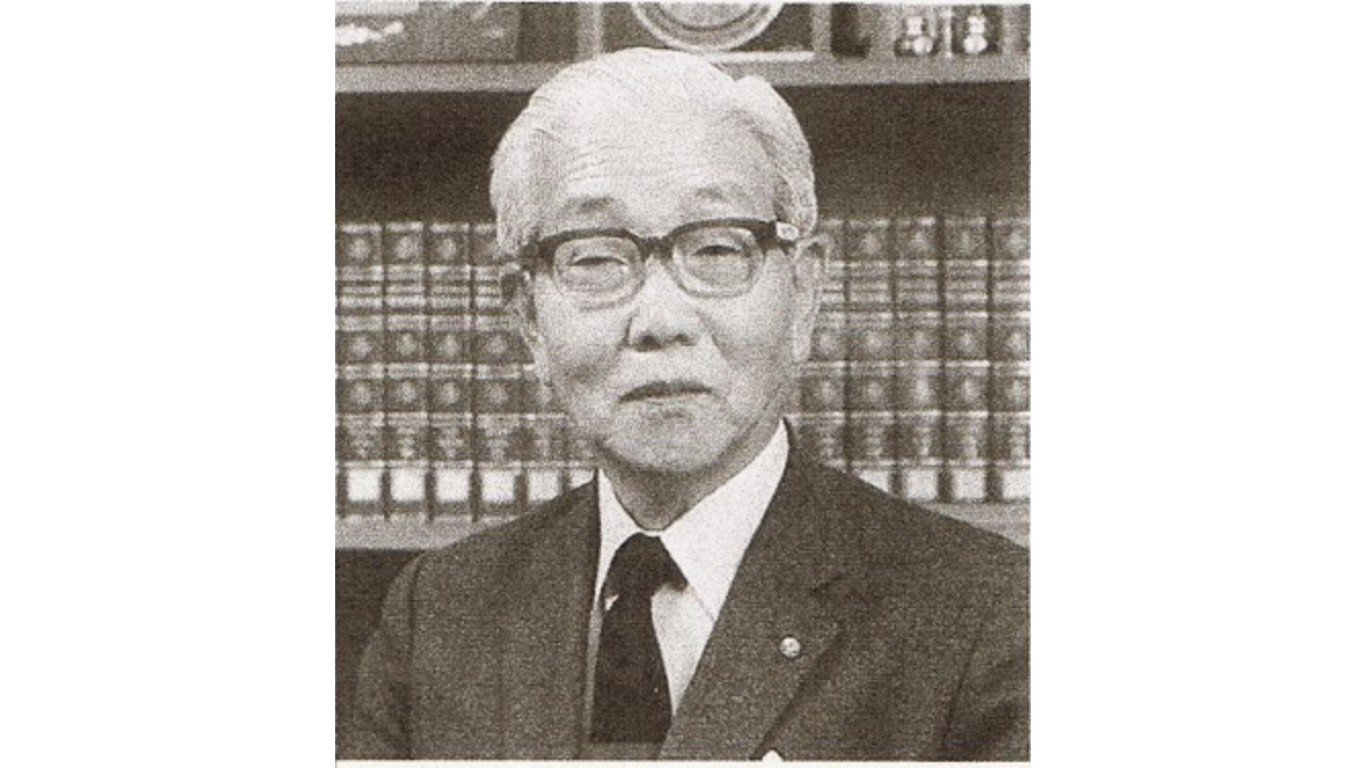
- Time and place: Late 1980s, Japan
Green Cross was a Japanese pharmaceutical firm and blood bank founded in 1950. It had a link to Unit 731, because among its founders were two of that program’s principals, Lieutenant-Colonel Ryochi Naito and Lieutenant-General Masaji Kitano. Although it developed numerous blood-related products over the years, the company was involved in Japan’s notorious HIV-tainted blood scandal, and critics have drawn a moral link between the actions of the Unit 731 scientists and the reckless disregard Green Cross showed for patients. After a series of mergers, the company became part of the Mitsubishi Pharma Corporation.
HIV-tainted blood scandal

- Time and place: Late 1980, Japan
While the actions of Green Cross were partly responsible for infecting hemophiliacs with HIV-tainted blood, prominent government health officials were also involved, knowing that certain blood products that had not been treated with heat may have been contaminated with HIV. Despite knowing this, they failed to stop the use of the products, and over 1,800 hemophiliacs contracted HIV as a result, with some 400 dying from AIDS. A former health ministry official, Akihito Matsumura, was charged with negligence. Dr. Takeshi Abe, a hemophilia expert who headed the health ministry’s AIDS study group, was charged with attempted murder in 1994 but eventually found not guilty. Renzō Matsushita, who had headed up the ministry’s Pharmaceutical Affairs Bureau, went to jail for two years over the scandal.
Tuskegee syphilis study
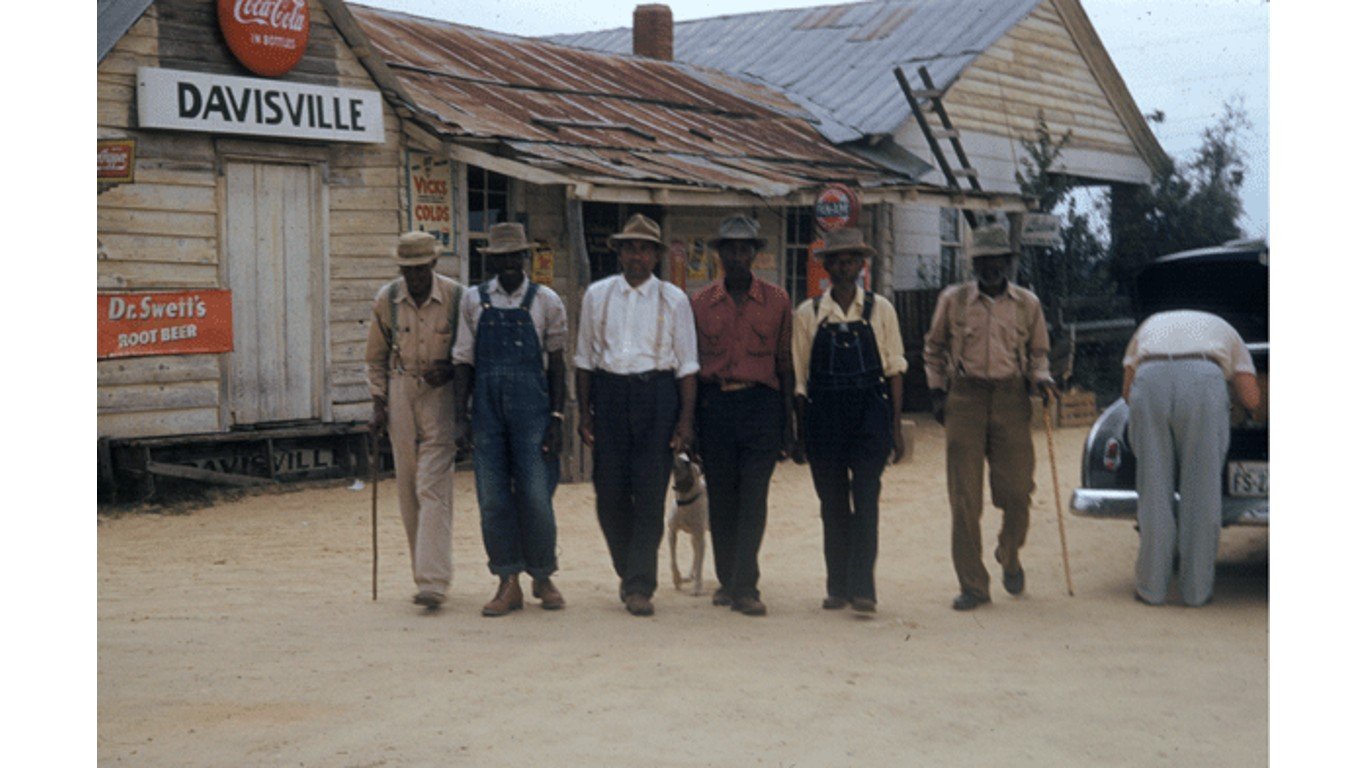
- Time and place: 1932-1972, Alabama
The U.S. Public Health Service in association with the Tuskegee Institute, ran the Tuskegee experiment, which is where they studied the progression of syphilis in 600 African-American men. They didn’t know they had the disease, but were told they were being treated for “bad blood,” and promised free medical care. Though penicillin didn’t become the recommended treatment until 1943, other less effective medications, that still might have been of some use, were withheld so scientists could study the development of the disease. The unethical study was exposed in 1972, leading to public outrage and its cessation. By then, over 100 patients had died from syphilis or related causes, and both wives and children of the victims had also been affected. In 1974, survivors and heirs received a $10 million settlement, and guidelines were issued to protect human subjects in research projects. The last participant passed away in 2004.
Stanford prison experiment
- Time and place: 1971, Stanford University
This was a highly influential psychological study overseen by university psychology professor Philip Zimbardo. The Stanford prison experiment involved paid volunteers being assigned roles as “inmates” or “guards” in a mock prison, with the “guards” quickly beginning to mistreat the “inmates.” It was later revealed that the “guards” were coached to be cruel and the experiment’s most memorable moments were staged – and Zimbardo ended the study on its sixth day. The experiment has long been subject to scrutiny, with many viewing it as more of a dramatic demonstration than serious science, and in 2018 several critics called it deeply flawed and even fraudulent. Zimbardo published a detailed refutation of the charges, but many psychologists have called for mention of the experiment to be removed from textbooks.
MK-Ultra

- Time and place: 1953-1973, various
The CIA’s top-secret MK-Ultra program involved illegal experiments in behavior modification – or “mind control” – using electro-shock therapy, hypnosis, polygraphs, radiation, and a variety of drugs, including LSD. Test subjects ranged from volunteers to those who had no idea they were involved in the program – some of them realizing it only years later. One project was Operation Midnight Climax, where unsuspecting men were dosed with LSD by prostitutes and their reactions were observed. The experiments were curtailed in 1963 and halted entirely in 1973 – but many of the program’s details were destroyed, keeping some of its secrets hidden forever.
Testicular transplants and other unethical surgery
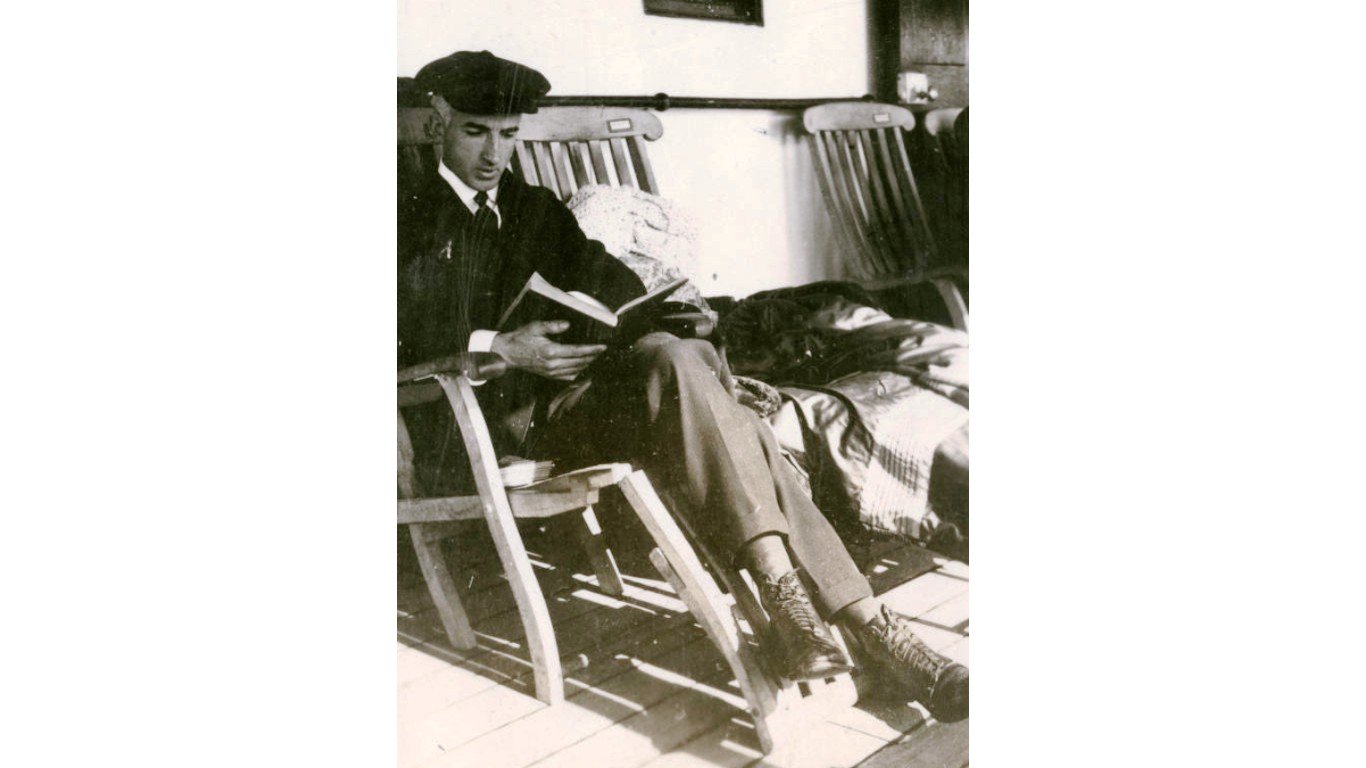
- Time and place: 1913-1951, San Quentin State Prison, California
In the early 20th century, Dr. Leo Stanley, chief surgeon at San Quentin State Prison, engaged in the highly unethical practice of transplanting testicles from executed prisoners into living ones, believing it could rejuvenate them. He also used testicles from animals like goats and boars. Stanley also believed in racial segregation and eugenics and both voluntarily and involuntarily sterilized inmates – many of them gay. Stanley served in the U.S. Navy Reserve during WWII, and when he returned to his role at the prison afterward, Department of Corrections policies had changed, and his surgeries were stopped.
Injecting cancer cells into patients and prisoners

- Time and place: Mid-1950s-1963, New York area hospitals
In the 1960s, Dr. Chester Southam, an oncologist, and immunologist at Memorial Sloan Kettering Cancer Center, injected live cancer cells into patients, mostly elderly, at facilities including Brooklyn’s Jewish Chronic Disease Hospital, and also into prisoners at a penitentiary in Ohio. (He also injected some subjects with West Nile virus.) Three physicians refused to participate in the study because of ethical concerns and went public with the information, and Southam was found guilty of fraud and deceit and given a year’s probation. Despite his unethical practices, he was later elected president of the American Association for Cancer Research and held prestigious positions at Thomas Jefferson University in Philadelphia.
‘Monster Study’ on stuttering

- Time and place: 1939, University of Iowa
In a stuttering experiment at the University of Iowa in 1939, 22 young orphans were used as subjects. The experiment, known as “The Monster Study,” involved the children being subjected to harassment and negative therapy in an attempt to induce stuttering. This didn’t cause the children to stutter but resulted in lifelong emotional and psychological problems. The ordeal was hidden for decades until 2001. Some of the orphans filed a lawsuit seeking damages and settled for $1.2 million. The state denied liability but agreed to the settlement to provide closure for the plaintiffs and avoid further litigation costs.
Using prisoners as dermatological guinea pigs

- Time and place: 1951-1974, Holmesburg Prison, Philadelphia
Dermatologist Albert Kligman – known as the co-inventor of the acne treatment Retin-A – conducted research for corporations like DuPont and Johnson & Johnson, often using prisoners at Holmesburg as subjects, exposing them to various products from chemical and cosmetic companies which left them with scars and pain. Dow even had Kligman study the effects of dioxin – an ingredient in Agent Orange – on inmates, without informing them of potential side effects. While the prisoners received modest compensation, their well-being was compromised through these experiments. It was also later discovered that the data Kligman used for his studies was flawed.
Prisoners irradiated

- Time and place: 1963-1973, Oregon State Penitentiary
Endocrinologist Carl Heller was enlisted by the Atomic Energy Commission which sought insights into radiation’s impact on male reproductive function. Heller devised a device to irradiate the testicles of prisoners, specifically evaluating its influence on sperm production. The prisoners underwent repeated biopsies and were later mandated to undergo vasectomies following the experiments. Over 130 prisoners had their testicles exposed to radiation during this study.
Thalidomide birth defects
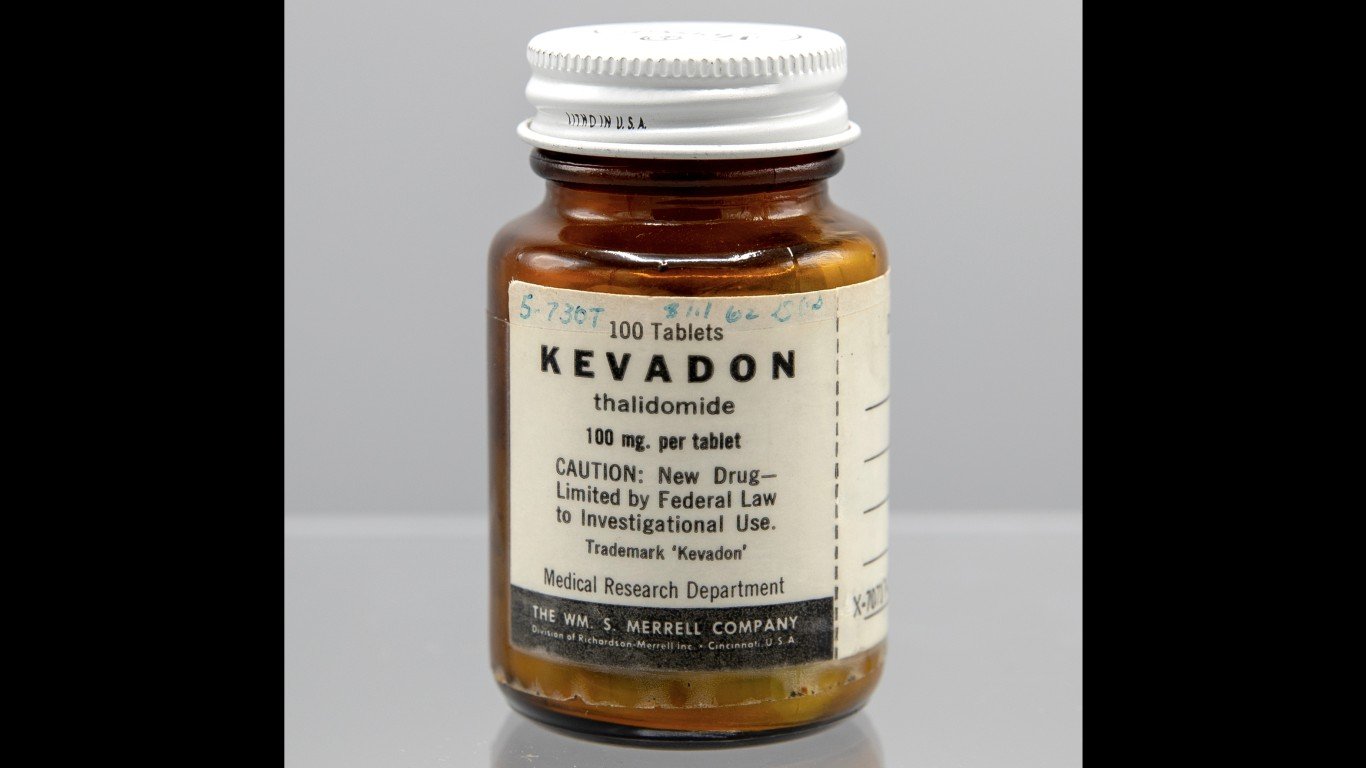
- Time and place: 1957-1962 worldwide
Developed in the mid-20th century, Thalidomide was a compound for treating conditions like colds, flu, nausea, and morning sickness in pregnancy, Its use resulted in a massive scandal when it was discovered to cause birth defects such as limb difference, hearing loss, and facial paralysis. More than 10,000 babies worldwide were affected, with about half dying within months of birth. The scandal led to tighter drug testing and reporting of side effects and significantly changed pharmaceutical licensing policies.
Defective silicone implants
- Time and place: 2009, France and other countries
French company Poly Implant Prothèses made breast implants that were given to about 300,000 women in 65 countries and were found to contain industrial-grade silicone rather than medical-grade materials. They were subject to causing irritation and inflammation, and to rupturing, releasing toxic substances into the body. Jean-Claude Mas, the founder of PIP, faced charges of involuntary injury. In response to the situation, French health authorities offered to cover the costs of implant removal and replacement for affected women. The use of these implants was prohibited in 2010.
Toxic cough syrup

- Time and place: 2006, Panama
At least 365 people in Panama died after consuming cough syrup that contained diethylene glycol, a toxic compound found in antifreeze. The country’s national health agency combined and disseminated the syrup, using an ingredient provided by the private company Medicom, which in turn had sourced it from a Spanish company that bought it from China. Five Panamanian officials and Medicom employees were jailed over the incident.
Contaminated meningitis medication

- Time and place: 2012, 20 states
A 2012 fungal meningitis outbreak that infected 793 patients throughout New England and beyond and led to the death of more than 100 of them was traced to Glenn Chin, a pharmacist at New England Compounding Center in Framingham, Massachusetts. To turn out more drugs faster, Chin ignored proper sterilization and testing processes and produced over 17,000 vials of contaminated methylprednisolone acetate, or MPA, a medication that could have staved off serious meningitis if it had been legitimate. He was also found to have employed a pharmacy technician whose license had been revoked. Chin and NECC president Barry Cadden were both convicted on a host of charges, with each being sentenced to eight years in prison and required to make financial restitution to the families of the victims.
Elixir Sulfanilamide poisoning
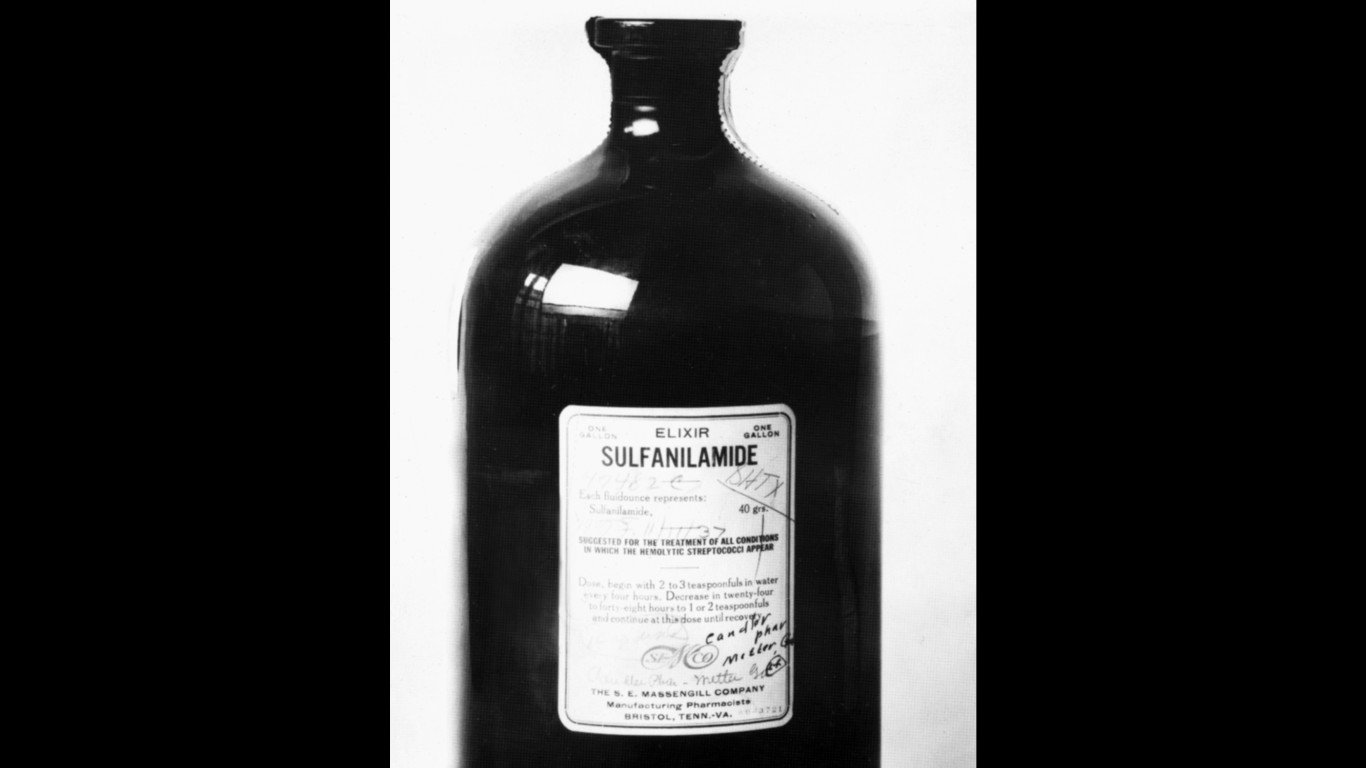
- Time and place: 1937, 15 states
Harold Watkins, the head chemist for the S.E. Massengill Company in Tennessee, concocted an oral antibiotic dubbed Elixir Sulfanilamide, apparently not realizing that one of its ingredients, diethylene glycol, was highly toxic. The drug, which was not properly tested before release, was widely prescribed, ultimately killing more than 100 people in 15 states. The incident led to the enactment of the 1938 Food, Drug, and Cosmetic Act, significantly increasing the FDA’s authority to regulate medicines.
Jim the Horse diphtheria contamination
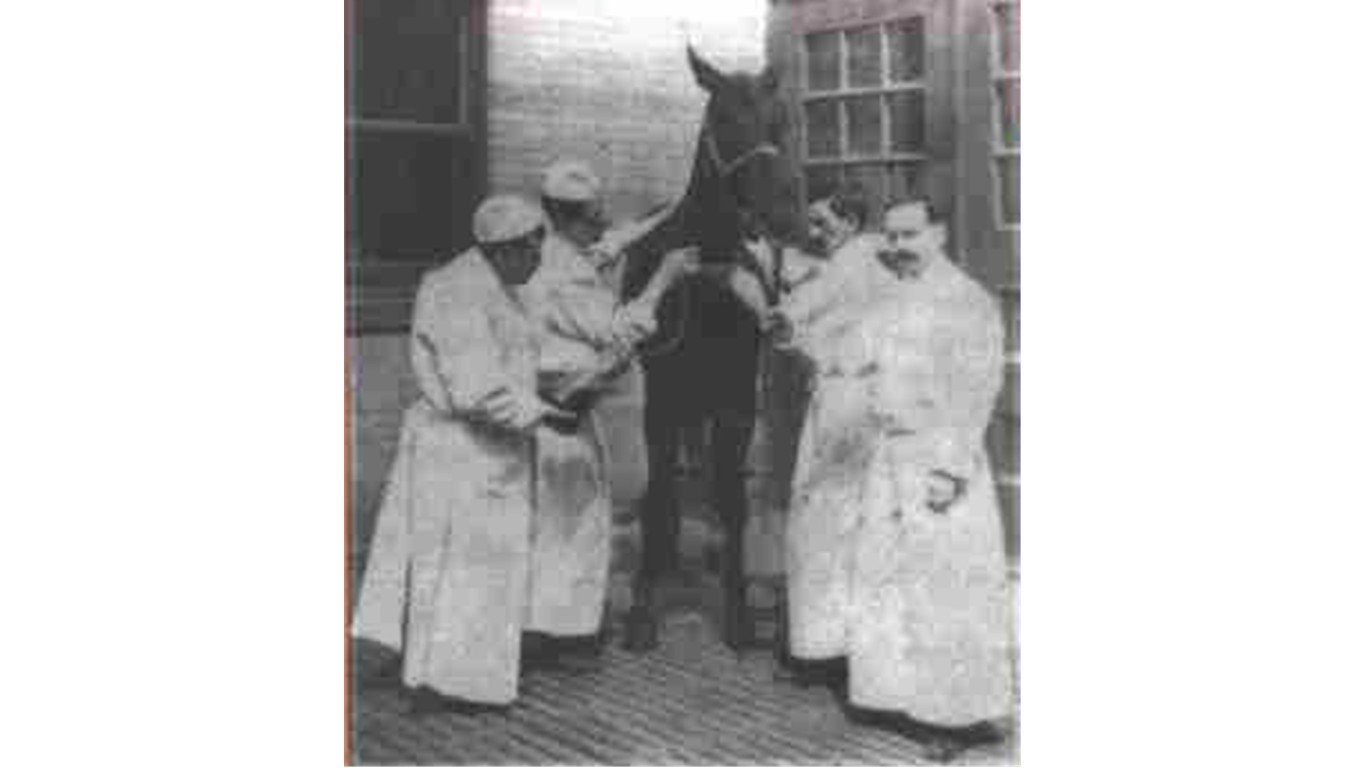
- Time and place: 1901, St. Louis
Around the turn of the century, diphtheria – a sometimes fatal bacterial disease – was commonly treated with an antitoxin made from the blood serum of horses. A St. Louis milk wagon horse named Jim produced more than 30 quarts of the antitoxin over three years, but then he contracted tetanus and was put down. Unfortunately, serum from Jim’s tainted blood was given to some local children suffering from diphtheria, resulting in the deaths of 13 of them. This incident, along with another similar event in New Jersey, highlighted the urgent need for regulatory controls. In response, Congress passed the 1902 Biologics Control Act, which gave the government control over the manufacturing of biological products.
Organ transplant racket

- Time and place: 2008, India
Authorities uncovered a kidney transplant racket in South Delhi, resulting in the arrest of 10 individuals, including two doctors. The group was found to have targeted homeless individuals, engaging in the illegal sale of their kidneys in 2008. The victims, who were from various regions of India including Assam, Bengal, and Kerala, were paid only a fraction of what the accused were. The police believe the gang may have transplanted more than 20 kidneys.
MMR vaccine controversy

- Time and place: 1990s, the UK and worldwide
A controversy over the use of the MMR vaccine – meant to protect children against measles, mumps, and rubella – arose in 1998 when a doctor named Andrew Wakefield published a research paper in the prestigious medical publication The Lancet linking the vaccine to autism and other issues. Problems with Wakefield’s research and conclusion were discovered immediately and the paper was retracted and later declared by the British Medical Journal to be fraudulent, and Wakefield lost his medical license. Unfortunately, the paper’s conclusions were taken up by vaccine skeptics and its misinformation led to a significant decline in vaccination rates, especially in high-income countries. This in turn led to a resurgence of measles cases in the U.K., the U.S., and Canada – and helped nurture an anti-vaccine movement that caused many to refuse the COVID-19 vaccines, resulting in countless preventable deaths.
Radioactive elements trials

- Time and place: 1945-1947, New York, Tennessee, Illinois, and California
Scientists associated with the Manhattan Project injected civilian patients in four states with radioactive plutonium, uranium, polonium, and americium, without their informed consent. They believed it essential to be able to judge the effects of radiation on human beings. The aim was to determine the absorption and retention rates of such elements in the body. The experiments were highly secretive and ethically questionable, as the subjects were essentially used as guinea pigs. The trials were later exposed, leading to an investigation by the Department of Energy in the 1990s, legal reforms, and compensation for victims’ families.
Willowbrook hepatitis experiments

- Time and place: 1956-1970, Staten Island
The Willowbrook Experiments were a series of studies conducted over 14 years at the Willowbrook State School in Staten Island, New York, where mentally retarded children were deliberately infected with hepatitis. The aim was to track how the viral infection develops and to test whether gamma globulin injections were effective in protecting against the disease. The experiments were criticized for using vulnerable test subjects and lack of informed consent, among other reasons. The researchers defended their actions by stating that outbreaks of hepatitis were so common at the school that the students probably would have contracted it anyway.
Triplets forcibly separated at birth

- Time and place: 1961-1980, New York City area
In a secret experiment meant to study the impact of nature versus nurture, triplets who were raised as Eddy Galland, Robert Sharfan, and David Kellman were separated at birth by two psychiatrists after their teenage mother put them up for adoption. The experiment involved placing the three in different homes – one blue-collar, one middle-class, and one well-to-do. Though the triplets were raised within 100 miles of each other, they had no knowledge of each other’s existence until they were 19 and accidentally learned the truth. They all showed signs of the experiment’s devastating impact, including mental health problems. One of the triplets, Eddy, committed suicide. Their story is told in the Netflix documentary “Three Identical Strangers.”
Surgical experiments on enslaved people
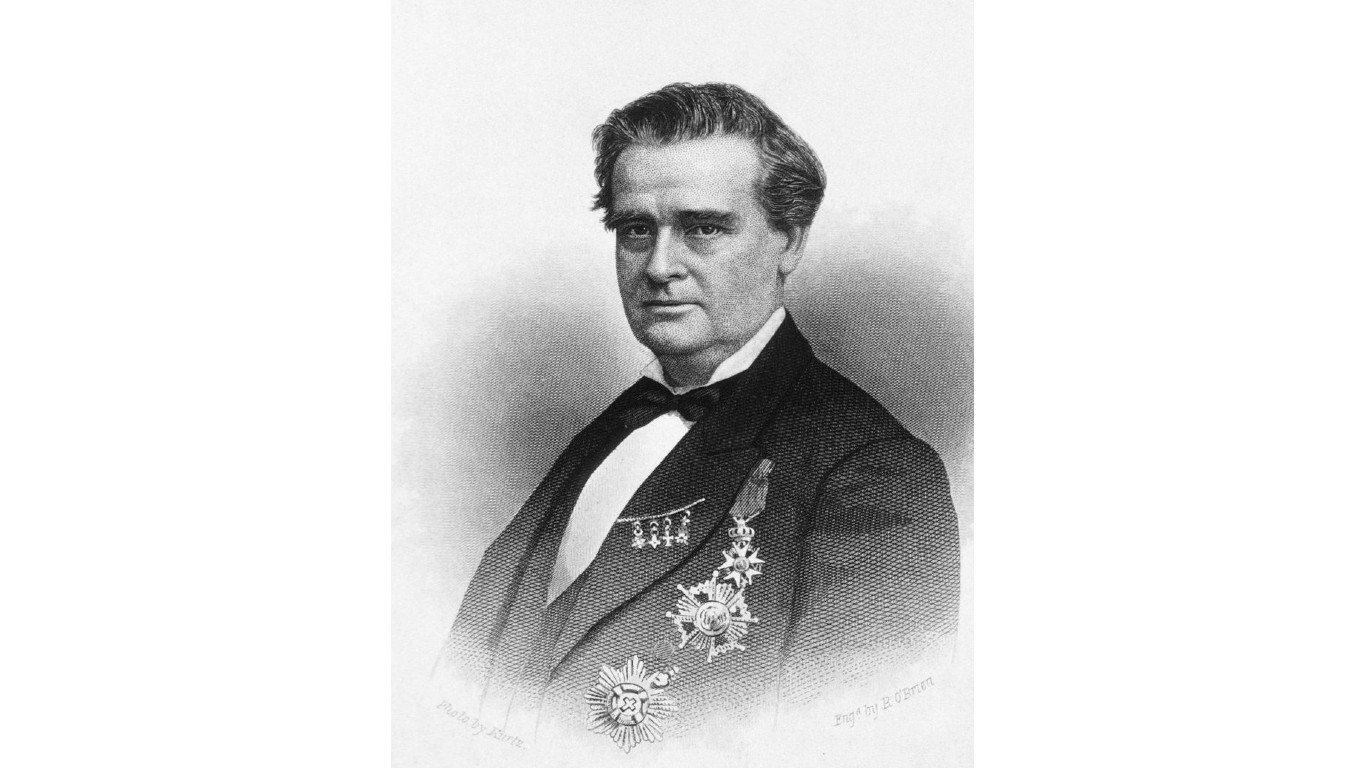
- Time and place: 1845-1853 (?), Montgomery, Alabama
Alabama physician James Marion Sims conducted experimental gynecological surgery in the 1840s on enslaved Black women. These procedures were performed without effective pain relief and some historians believe that it led to the women becoming addicted to opium. Sims aimed to treat complications of childbirth such as vesicovaginal fistulas, an obstruction in childbirth. Despite the pain and exploitation the women endured, Sims insisted they were willing participants. He has been called the “father of modern gynecology.”
Guatemala syphilis study
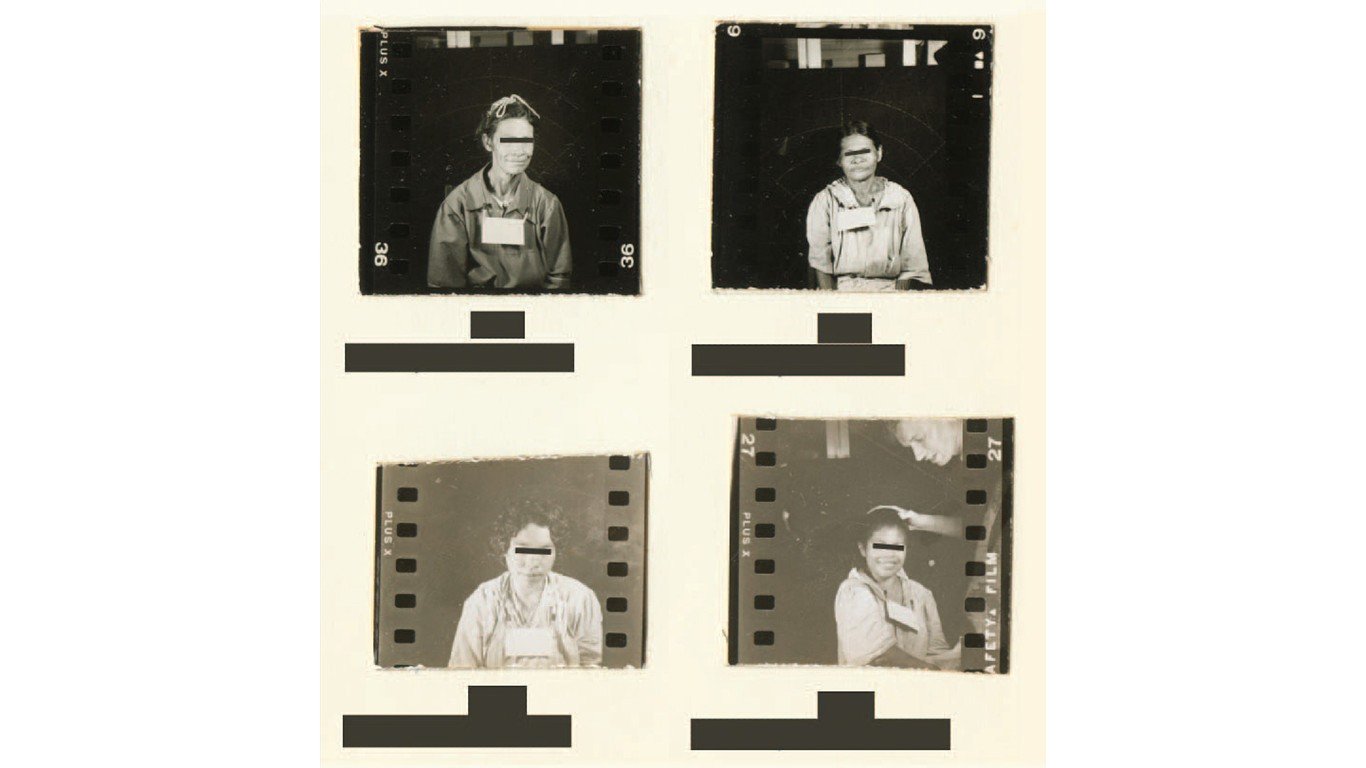
- Time and place: 1946-1948, Guatemala
The Guatemala syphilis study derived from unethical medical experimentation in which U.S. researchers – under the direction of Dr. John Charles Cutler, who had also been involved with the Tuskegee syphilis study – deliberately infected over 1,300 Guatemalan citizens, including prisoners, soldiers, children, and patients in mental institutions, with syphilis and other STDs without their consent or knowledge. The study’s purpose was to test the effectiveness of different medications, including penicillin. The incident led to international outrage, highlighting grave violations of human rights and ethical standards in medical research.
Contaminated blood scandal

- Time and place: 1970s-1980s, United Kingdom
For more than a decade, patients suffering from hemophilia and other ailments in the U.K. received transfusions of blood donated by individuals infected with HIV and hepatitis C. According to Tainted Blood, a group campaigning for recognition of the wrongs done, 4,800 hemophiliacs were infected with hepatitis C and 1,200 of them were also infected with HIV. Half of these individuals have now died. The contamination occurred because of the mixing of blood donations, increasing the chance of the virus spreading. Despite knowing the risks as early as 1983, officials continued to administer the infected blood.

